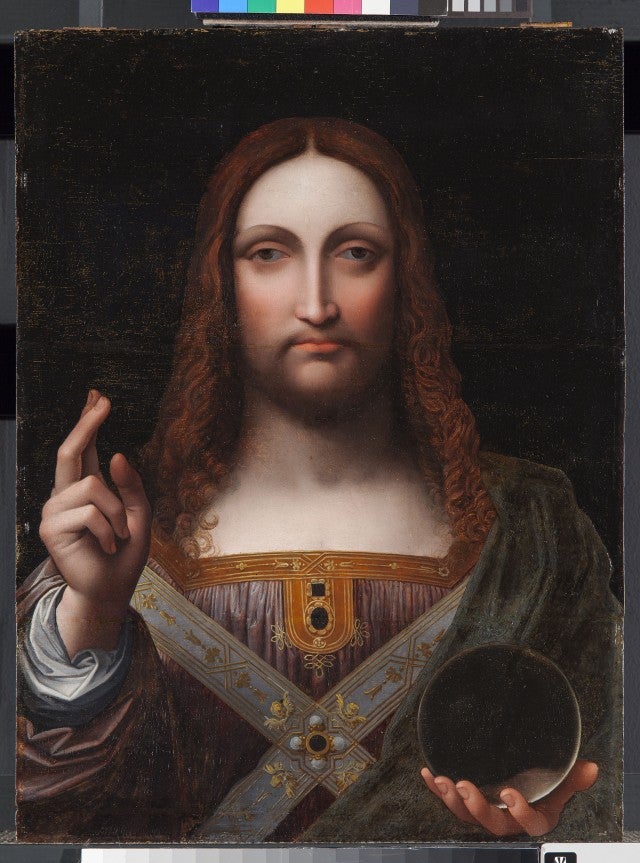From the Director, July 2019
Updated Jul 20, 2022
Learning from art, and our visitors
At the DIA we own such an extraordinary collection that our audiences come to visit from all over the country and the world! Many of them take a sort of “pilgrimage” to see the Rivera Detroit Industry murals, which is a National Historic Landmark, and then wander in the galleries to be amazed by many unexpected masterpieces. This was the comment I heard last month when a group of patrons from the Clark Institute in Massachusetts visited the DIA. In my welcoming remarks to the group, I shared some aspects of our history, including the fact that we are the first civic museum in the United States to acquire (in 1922!) a work by Vincent van Gogh, his self-portrait.
 The patrons from the Clark continued their visit with one of our curators, and as I was heading back to the office I ran into a group of 30 students or so from Hutchinson Elementary-Middle School in Detroit. They were jovially walking around in the American wing and looked relaxed and playful. I stopped, said hello, and introduced myself to the teacher leading the “expedition.” The students gathered around me with inquiring eyes, and the teacher mentioned that they were waiting for their 11 a.m. tour with one of our DIA gallery teachers. She asked me what exhibition they could see that would get the attention of the kids while waiting for their guided experience. They all were middle school students, and I asked if they had an interest in fashion and many of them raised their hands and smiled. I then took the group to our Isabel and Rubén Toledo show, Labor of Love. They loved the display, and had a number of questions about Isabel’s outfits, Rubén’s paintings and Rivera’s drawings. Some of them voiced some words in Spanish, hola, cómo estas?, uno, dos, tres! It was inspiring to see the works of art triggering the minds of the students at the speed of light. I felt connected to them.
The patrons from the Clark continued their visit with one of our curators, and as I was heading back to the office I ran into a group of 30 students or so from Hutchinson Elementary-Middle School in Detroit. They were jovially walking around in the American wing and looked relaxed and playful. I stopped, said hello, and introduced myself to the teacher leading the “expedition.” The students gathered around me with inquiring eyes, and the teacher mentioned that they were waiting for their 11 a.m. tour with one of our DIA gallery teachers. She asked me what exhibition they could see that would get the attention of the kids while waiting for their guided experience. They all were middle school students, and I asked if they had an interest in fashion and many of them raised their hands and smiled. I then took the group to our Isabel and Rubén Toledo show, Labor of Love. They loved the display, and had a number of questions about Isabel’s outfits, Rubén’s paintings and Rivera’s drawings. Some of them voiced some words in Spanish, hola, cómo estas?, uno, dos, tres! It was inspiring to see the works of art triggering the minds of the students at the speed of light. I felt connected to them.
Before entering the show I shared information with them about Isabel and Rubén as artists — something they all could become one day. I also let them know that we are having a car design exhibition next year, Detroit Style. Their reaction was so positive that they wanted to book their visit on the spot. They were genuinely interested in the museum, and one quickly asked me, “does the DIA own a da Vinci”? “That is a very good question,” I replied. “In the late 1800s,” I continued, “a gentleman whose name was James Scripps donated a work to the DIA which at the time was believed to be by Leonardo da Vinci and had belonged to the King of France, Francis I.” The students were closely following my explanations, and I added that, “our curators today don’t think the work is by da Vinci anymore but by one of his followers.” The painting represents the Salvator Mundi. It is quite beautiful and iconic and shows the influence of the great master. I told them that we have it installed in the galleries and that I would make sure their DIA teacher, Ian Rapnicki, would take them to see it, and he did.
Later while speaking with our DIA team, I learned that Leonardo is the artist the students bring up the most in their visits to the museum. I thought to myself that I needed to do something about this, and I am resolved to work towards bringing a da Vinci painting on loan to Detroit in the future! It would be a good fit for us to show it within the context of our extraordinary collection. In the meantime, there is nothing more rewarding than wandering in the galleries and learning from our amazing art and, of course, our amazing visitors: the students from Hutchinson in Detroit.

DIA Director, Salvador Salort-Pons in Rivera Court
Learning from art, and our visitors
At the DIA we own such an extraordinary collection that our audiences come to visit from all over the country and the world! Many of them take a sort of “pilgrimage” to see the Rivera Detroit Industry murals, which is a National Historic Landmark, and then wander in the galleries to be amazed by many unexpected masterpieces. This was the comment I heard last month when a group of patrons from the Clark Institute in Massachusetts visited the DIA. In my welcoming remarks to the group, I shared some aspects of our history, including the fact that we are the first civic museum in the United States to acquire (in 1922!) a work by Vincent van Gogh, his self-portrait.
 The patrons from the Clark continued their visit with one of our curators, and as I was heading back to the office I ran into a group of 30 students or so from Hutchinson Elementary-Middle School in Detroit. They were jovially walking around in the American wing and looked relaxed and playful. I stopped, said hello, and introduced myself to the teacher leading the “expedition.” The students gathered around me with inquiring eyes, and the teacher mentioned that they were waiting for their 11 a.m. tour with one of our DIA gallery teachers. She asked me what exhibition they could see that would get the attention of the kids while waiting for their guided experience. They all were middle school students, and I asked if they had an interest in fashion and many of them raised their hands and smiled. I then took the group to our Isabel and Rubén Toledo show, Labor of Love. They loved the display, and had a number of questions about Isabel’s outfits, Rubén’s paintings and Rivera’s drawings. Some of them voiced some words in Spanish, hola, cómo estas?, uno, dos, tres! It was inspiring to see the works of art triggering the minds of the students at the speed of light. I felt connected to them.
The patrons from the Clark continued their visit with one of our curators, and as I was heading back to the office I ran into a group of 30 students or so from Hutchinson Elementary-Middle School in Detroit. They were jovially walking around in the American wing and looked relaxed and playful. I stopped, said hello, and introduced myself to the teacher leading the “expedition.” The students gathered around me with inquiring eyes, and the teacher mentioned that they were waiting for their 11 a.m. tour with one of our DIA gallery teachers. She asked me what exhibition they could see that would get the attention of the kids while waiting for their guided experience. They all were middle school students, and I asked if they had an interest in fashion and many of them raised their hands and smiled. I then took the group to our Isabel and Rubén Toledo show, Labor of Love. They loved the display, and had a number of questions about Isabel’s outfits, Rubén’s paintings and Rivera’s drawings. Some of them voiced some words in Spanish, hola, cómo estas?, uno, dos, tres! It was inspiring to see the works of art triggering the minds of the students at the speed of light. I felt connected to them.
Before entering the show I shared information with them about Isabel and Rubén as artists — something they all could become one day. I also let them know that we are having a car design exhibition next year, Detroit Style. Their reaction was so positive that they wanted to book their visit on the spot. They were genuinely interested in the museum, and one quickly asked me, “does the DIA own a da Vinci”? “That is a very good question,” I replied. “In the late 1800s,” I continued, “a gentleman whose name was James Scripps donated a work to the DIA which at the time was believed to be by Leonardo da Vinci and had belonged to the King of France, Francis I.” The students were closely following my explanations, and I added that, “our curators today don’t think the work is by da Vinci anymore but by one of his followers.” The painting represents the Salvator Mundi. It is quite beautiful and iconic and shows the influence of the great master. I told them that we have it installed in the galleries and that I would make sure their DIA teacher, Ian Rapnicki, would take them to see it, and he did.
Later while speaking with our DIA team, I learned that Leonardo is the artist the students bring up the most in their visits to the museum. I thought to myself that I needed to do something about this, and I am resolved to work towards bringing a da Vinci painting on loan to Detroit in the future! It would be a good fit for us to show it within the context of our extraordinary collection. In the meantime, there is nothing more rewarding than wandering in the galleries and learning from our amazing art and, of course, our amazing visitors: the students from Hutchinson in Detroit.

